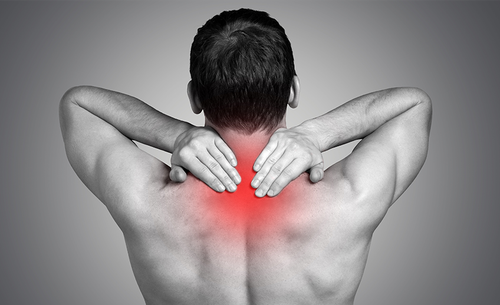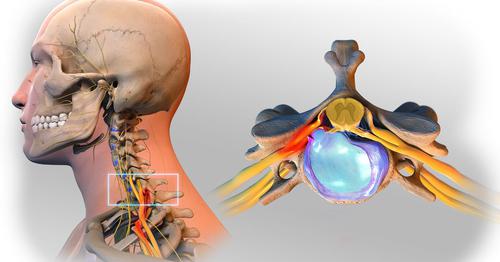Best Exercises for Herniated Disc Around the Neck
A herniated disc is an extremely painful condition experienced when the outer wall of the human spinal disc ruptures, allowing the gel-like substance found at the disc center to squeezes out. The human spine is made up of vertebrae separated from each other by spinal discs. Those spinal discs act as shock absorbers and also prevent the rubbing together of the vertebrae. On each side of the spinal disc, there are nerves branching to other body parts. When that gel squeezes out and puts pressure on a healthy nerve, the following symptoms are caused:
-
Pain that radiates from arm to hands
-
Neck pains when moving your head
-
Painful shoulder blades
This herniated disc problem mainly affects individuals between the ages of 30 to 40 years and is mostly caused by disc injuries and poor posture.
Tips Regarding Exercises for Neck Herniated Disc
Apart from over-the-counter medicines which help in relieving pain, a doctor's advice on exercises for the herniated disc in the neck is vital. Below are the main neck exercises that really help.

- Neck extension
Neck extension is a simple process: Lie on a table or bed facing upwards with your neck hanging. Then, lower your head gently and hold that lower position for one minute.
Note: if you feel the pain redistributing to your arms, you have to stop. If there is no pain felt, repeat the neck extension with rest intervals of one minute for about 15 times every day.
- Neck retraction
Lie on your bed or on a carpet facing upwards and hands placed on the chest. Then try to push your head towards your chest as if you want your chin to touch your upper chest part. After a single press, hold on that position for ten seconds and repeat the same process 20 times.
- Neck rotation
For this exercise, you need to sit in a position where your shoulders are relaxed. Try turning your head to one side gently but do not overstretch your neck. Repeat the same on the other side and remember to hold either side for about 30 seconds. Repeat that process five times in a day.
- Shoulder retraction
When taking any exercises for the herniated disc in the neck, you need personal commitment.
Stand or sit against a wall and stretch both hands to form the letter "T”. Fold your hands to 90 degrees with fingers facing upwards. Then push your shoulders and arms downwards against the wall and stretch your shoulder blades a couple of times.
- Scalene stretch
Take a seat and relax your body and shoulders. Hold the back part of your head with one hand and then try tilting or pushing your head 45 degrees towards your armpits. Hold that position for around 30 seconds. Take a rest and repent five times a day.
- Trap and neck stretch
Grab one of your wrists from behind with the other hand while standing. Stretch or extend your shoulders downward while pushing them. Then, turn your head to one side, then stretching and tilting it until you feel it the pressure. Hold that position for 20 seconds. Repeat this three times on each side.
- Grounded tipover tuck
Sit into a Child's Pose, with your hand, firmly stretched towards the back on the floor to support your position. Lower your head and take deep breaths while pressing your palm heels to increase your shoulder stretch.

Tips on Additional Treatments
Besides the use of exercises treatment for the herniated disc in neck, the following nonsurgical and surgical treatments can be used. Please consult your doctor for advice before you try these tips.
1. Non-surgical treatments
- Non-steroidal anti-inflammatory drugs (NSAIDs)
These are drug types prescribed for pain relief and reducing inflammation. They include ibuprofen, Celebrex, aspirins, and naproxen.
- Muscle relaxers
One of the main effects of herniated discs is muscle spasms. Therefore, medications which help relax your muscles are crucial. Such medicines include methocarbamol, carisoprodol, and cyclobenzaprine.
- Steroid Injections
This must be done by a trained specialist. When the herniated disc effect becomes too painful, steroid injection plus an analgesic-numbing agent are used. This injection helps reduces the inflammation and swelling on the nerves. Epidural Steroid Injections is estimated to have a 50% positive effect.
- Therapy
In events where exercise and medication are not proving worthwhile in herniated disc pain relieving, physical therapy is the other effective treatment for herniated disc neck. A therapist will teach you some excellent sitting, standing, sleeping or resting positions that will help relieve the pain.
2. Surgical treatments
Surgical treatments are effective although used as the last option if other treatment efforts seem futile.
- ACDF
Anterior cervical discectomy & fusion is a small surgery done on the neck which exposes the affected part. All the muscles, nerves, and vessels are moved cautiously after which the ruptured portion pressing the nerves is completely removed. After the removal, a fusion, or bone graft is done to fill the herniated disc and space around.
- Posterior cervical discectomy
This is almost similar to ACDF but there is no fusion or bone graft. Here, about one to two inches of an incision is done around the neck to expose the bony vertebrae. The damaged disc and muscles are moved to expose the ruptured disc part which is then removed. Lastly, the nerve root part is left to fill the space left after the ruptured part removal and prevent further compression.
A herniated disc condition is painful but can be treated. If you take your doctor's advice and follow the above reference guidelines carefully, within six weeks you should be all good. No matter what treatment is effective, all you need is a personal commitment.
YOU MAY LIKE
-
Over Eighteen and Still Too Short: What to Do About It?
-
Lower Back Pain – Causes, Diagnosis, and Treatment
-
Pain of the Hip in the Evening While Lying Sideways: Causes and Treatment
-
Is It Safe to Crack Your Neck? Find the Answer Inside
-
Is Neck Pain Affecting Your Child?
-
Experiencing Neck Pain on the Right Side? Causes and Treatment
-
Reasons Why Extending Arm Can Be Hard After Curls
-
5 Best Ways to Get Rid of Athlete’s Foot
-
Hard Lumps on Your Finger Joints Beneath the Skin – Causes & Treatments
-
When Do You Stop Growing Taller?: Secrets About Boys and Girls
